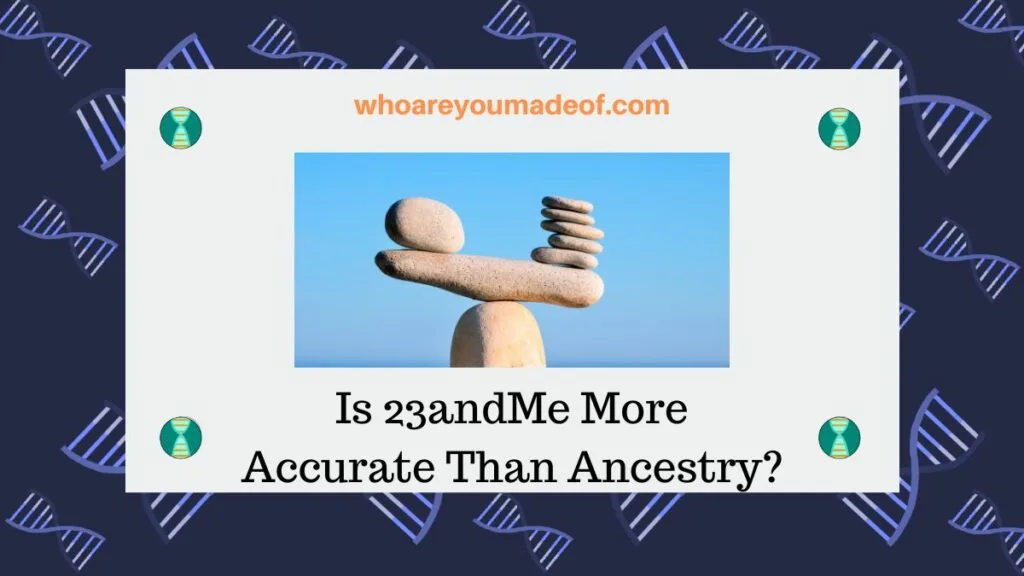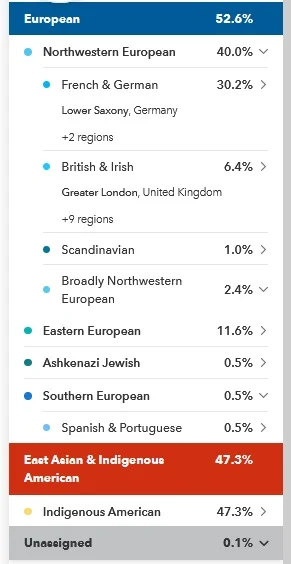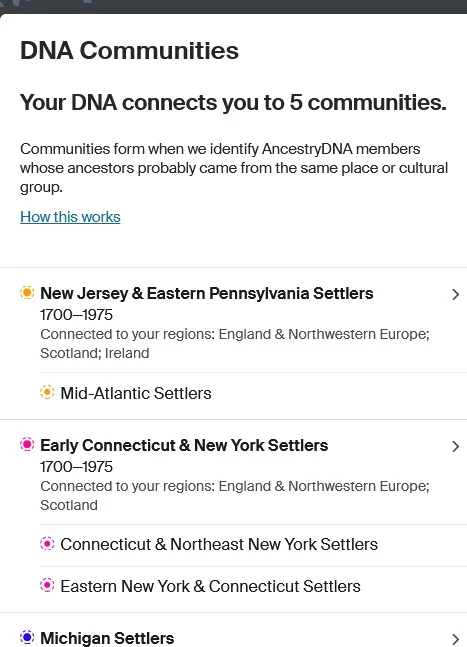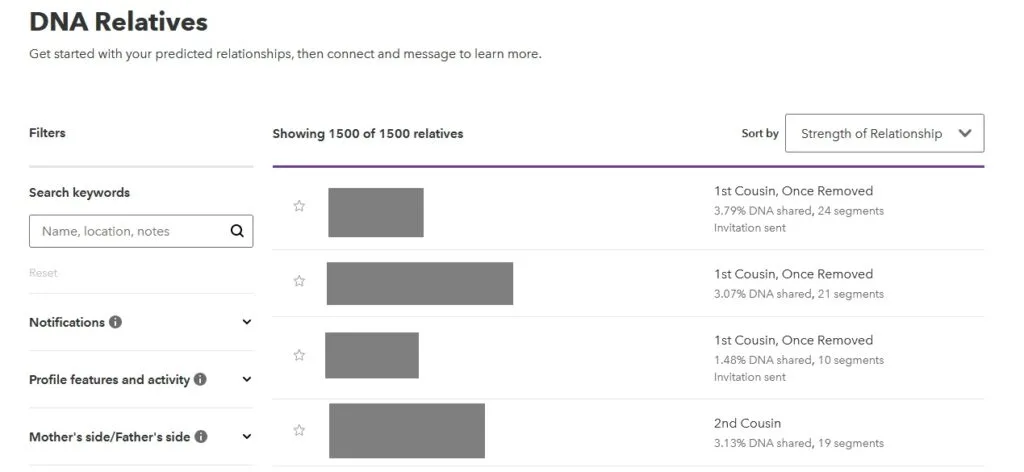Do you want to know if 23andMe is more accurate than Ancestry? For those wanting to choose the best DNA test and learn the most from their results, this is an important question.
In this post, learn the answer. Spoiler alert: the answer is not what you might think.

Why do so many people wonder which of these two tests are most accurate? It's because Ancestry and 23andMe are the two most popular companies offering consumer DNA testing for learning about ancestry.
Customers often choose between these two companies when deciding which test to take, or sometimes even take both tests. When results don't look exactly the same, there is often a discussion about which company offers the most precise results.
Is 23andMe better than Ancestry?
The DNA tests offered by Ancestry and 23andMe are both excellent DNA tests. For anyone who wants to learn about where their ancestors may have lived, both of these companies offer a great product.
Both companies have many years of experience in the DNA testing field and have millions of customers in their database. The size of their DNA testing database matters because it has a direct impact on both the number of DNA matches that we can find on their websites and in the quality of ethnicity or ancestry estimates provided.
The results that 23andMe and Ancestry they offer do have differences that I will explain below, but they are both great choices. If you are trying to decide between these two DNA tests, or want to know why your results from both companies seem different, I hope that the information below helps you.
23andMe Ancestry Composition Report vs. Ancestry Ethnicity Estimate
One of the top reasons people decide to take DNA tests is for the ethnicity or ancestry estimate. This estimate tells which regions of the world most closely match our DNA and can help us understand where our ancestors may have lived.
Below is an example from the 23andMe Ancestry Composition report. Every individual person will see different results based on their family's unique ancestry and the DNA that they inherited from their ancestors.

The 23andMe and Ancestry tests both provide reliable results, so there is no meaningful difference in accuracy between tests. However, there are a few things that you might notice if you compare your 23andMe results with those from Ancestry.
Your 23andMe Ancestry Report will provide you with:
- The Ancestry Composition Report, a list of percentages and regions of the world that most closely match your DNA
- The ancestry timeline that can help you estimate how far back you need to look in your family tree to find your ancestor from that region
- Chromosome painting with the ability to adjust the confidence level
With Ancestry you get:
- The Ethnicity Estimate, a list of percentages and regions of the world that most closely match your DNA
- The DNA Story that can help you understand migrations that your ancestors may have made throughout the past couple of hundred years
- Chromosome painting with the ability to view ethnicity inheritance from each parent, even if they have not taken a DNA test
As you can see, both the Ancestry and 23andMe ethnicity results are great, which means no results are really better than the other. However, you can also see from the lists that there are a few differences that might be important to you.
For example, with 23andMe, you do see the very small percentages that you don't usually get with Ancestry. In addition, you do have the ability to download the ethnicity data by DNA segment from the Chromosome Painter.
Ancestry does have a Chromosome Painter, but we can't download the data at this point. However, Ancestry does have the Genetic DNA Communities feature, which is not offered on 23andMe.

Both sites approach the ethnicity estimate results a little differently, with 23andMe showing how closely your DNA matches within states, regions or administrative districts in a specific country. Ancestry has more categories of Ethnicity Regions and Communities with which to compare your DNA.
Which test is best for you will depend on what your needs are exactly.
DNA matches on 23andMe vs. Ancestry
DNA matches that show up on our DNA match lists on both 23andMe and Ancestry are very accurate, especially those DNA matches that show up towards the beginning, or top, of our match lists. These matches are our closest relatives that have also done DNA tests with the same company.
Below is what the basic DNA Relatives list looks like on 23andMe. If you click on a particular match, you can learn more about them:

Even though both DNA tests offer a very accurate DNA match list, we do see some obvious differences. Aside from the visual way that DNA matches are presented on each website, there are notable pieces of information offered by 23andMe and Ancestry that is not easily available on the other site.
On the 23andMe DNA match list, we can usually see:
- Total amount of DNA that we share with our DNA match as a percentage
- Our estimated relationship or exact relationship, if we have specified manually how they are related
- Our DNA match's name or initials and sometimes, some basic details about them (i.e. city or state where they live, or age)
- DNA matches shared in common, called "Relatives in Common" on 23andMe
- Ethnicity or ancestry regions shared in common
- If the DNA match has filled out their profile, we might be able to see a list of surnames in their family tree or a link to their family tree on another website
- Their maternal and paternal haplogroups
- How much Neanderthal ancestry our DNA match has compared to us
- If our DNA match's privacy settings allow, we can compare our DNA with theirs using 23andMe's Chromosome Browser
On Ancestry's DNA match list, we will find:
- Total amount of DNA that we share with our DNA match as a percentage, total number of centimorgans, number of total DNA segments shared, and the size of the longest DNA segment
- Our DNA match's name
- Our estimated relationship or exact relationship, if we both have family trees that are linked to our DNA test and a Common Ancestor hint has been generated
- Most recent common ancestors, if there is a Common Ancestor hint based on family tree information
- Surnames shared in common, if both of us have family trees on Ancestry
- A pedigree chart for our DNA match going back about five generations, if they have a family tree connected to their DNA results, and a link to view their full tree on Ancestry (requires a subscription)
- A map of ancestor birth locations
- DNA matches shared in common, called "Shared Matches" on Ancestry
- Ethnicity or ancestry regions shared in common

You can understand from these two separate, lengthy lists of all that is offered on each DNA match list that we can really learn a lot from DNA matches on either site. Both DNA match lists are regularly updated as more customers take DNA tests and more matches are discovered, and new features are always available for those who have already tested.
If both companies offer a great DNA match list, how do you choose between them? Which DNA match list is best?
My recommendation has always been to take both tests, if at all possible, but this isn't always possible for everyone.
The biggest differences between the DNA match lists, in my experience, is that we often get more overall DNA matches with Ancestry because their database is much larger than that of 23andMe. However, with 23andMe, we do get the Chromosome Browser, which allows us to learn a bit more about the DNA that we share with our matches at the chromosome level.
So, making the decision about which DNA match list is better is going to depend on your own personal preference and what type of information you are hoping to learn from your DNA testing experience.
Conclusion
I hope that this post has helped you understand the question that many have, which relates to whether 23andMe is more accurate than Ancestry, or vice versa. As you now know, it is more complicated than a simple "yes or no" answer.
If you have any questions about something that you read in this post, or if you have tested with both Ancestry and 23andMe and would like to share an observation that you have made while comparing your results, I would love to hear from you in the discussion below.
Thanks for stopping by!

Patricia
Monday 10th of October 2022
My father was an abandoned baby, left in an Adelaide, South Australian street on March 5, 1919. His parents are therefore unknown. I would love to know if my sister, brother and I have any relatives on his side. Which test is best for this purpose? Is it better for my brother to do the test or me? We know a great deal of relatives on my mother’s side. I would be grateful for your advice. Incidentally, we do have a snippet of my father’s hair; is that useful for any tests you know about? Kind regards, Patricia Joy
Jamie Rutherford
Sunday 25th of September 2022
We tested by husbands DNA through Ancestry because we wanted his autosomal DNA tested and relatives had gotten these test results from Ancestry, plus I checked and Ancestry’s website stated they test the autosomal. The shock was when we only received mtDNA results! I called Ancestry’s customer service and was told “We only test mtDNA at this time”. I want our money back so we can get the test results we want! What happened here?
Evie Hanlon
Tuesday 9th of August 2022
It worries me that 23andme would bundle Irish and English DNA together. Scotland and Ireland would make sense given their proximity. You'd be majorly pissed if you were from Ireland and that was your result. It makes me think their DNA pool must be really small if they can't differentiate between the two.
Clóda
Tuesday 27th of June 2023
@Evie Hanlon, Why would anyone be pissed because Britain and Ireland are placed together? It says Irish and British and that includes Scotland, Wales and England - three countries are on the same landmass so perfect sense to have them as one, being as they are very much a mixture. Do you not think there are people with Irish parents that marry British people? They have and for generations.